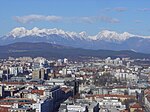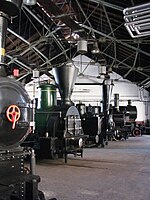Slovenian Youth Theatre
1955 establishments in SloveniaArts organizations established in 1955Theatres in Ljubljana
The Slovenian Youth Theatre or Mladinsko Theatre (Slovene: Slovensko mladinsko gledališče) was founded in Ljubljana in 1955 as the first professional theater for children and youth in Slovenia. It is situated in the Baraga Seminary, which was built by architect Jože Plečnik in the center of Ljubljana. In the 1980s, it became a center of theatrical research and politically-engaged theater. It is known for a wide range of innovative poetics of different directors and an ensemble energy, a Peter Brook-like approach to acting with a laboratory for theatre research for actors, directors, choreographers and musicians to research, develop, and create.
Excerpt from the Wikipedia article Slovenian Youth Theatre (License: CC BY-SA 3.0, Authors).Slovenian Youth Theatre
Vilharjeva cesta, Ljubljana Bežigrad
Geographical coordinates (GPS) Address Nearby Places Show on map
Geographical coordinates (GPS)
| Latitude | Longitude |
|---|---|
| N 46.061061111111 ° | E 14.509522222222 ° |
Address
Festivalna dvorana - Pionirski dom
Vilharjeva cesta 1
1000 Ljubljana, Bežigrad
Slovenia
Open on Google Maps








